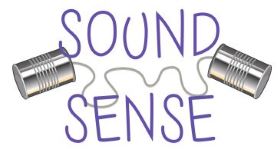
Hearing Aids: What do We Learn from a "Diagnostic" Hearing Aid Trial?

Diagnostic hearing aid trials give us a clearer picture of how a person is functioning. With the extended time allowed, brains are able to learn to not only make use of the additional sound information but begin to learn how to ignore irrelevant information.
Imagine driving in a convertible on blindingly sunny day while driving on a curvy road in the country. Flash. Flash. The sun hits your eyes piercingly unless you look away...but you can't look away or you'll miss the next move. You squint your eyes, you shield them. Nothing blocks out the flashes of sun through the trees.
Hearing in noise is very similar to trying to drive under such conditions. Using hearing aids is much like an electronic filter, like wearing polarized lenses to help you cope with glaring sunlight. Sunglasses, no matter how well made cannot take out all of the light or only let you see the next turn or the car in front of you. Rather, they bring down the harshness of the light and the overwhelming intensity so that you can focus your attention on the road rather than on your discomfort.
Hearing aids are a step better as they use computer algorithms to reduce the noise and directional microphones to focus your hearing in the direction where speech is coming from.
For children and adults with auditory processing disorder or hearing loss, the use of hearing aids often significantly improves their hearing in noise. Through the use of amplification, as their ability to hear in background noise improves, the world, itself, may seem to change. Gradually, sounds give you clues about where they originate, who is speaking, differences in accents, and even grammatical markers become increasingly audible, making it easier to predict and understand what is said.
Once sound becomes increasingly clear, changes in behavior often follow. Anxiety eases and fatigue is less evident at the end of a long day. Speech errors often become more easily resolved as a child's voice can be self-monitored, from the outside in. In a six-week diagnostic trial, the changes in hearing, speech, and behavior often become so evident that they can be noticed by others. Speech therapists often comment that children are making considerably better progress. Teachers comment how the child is calmer. Spouses notices fewer disagreements, despite an otherwise stressful evening of chores and paperwork.
But what do hearing aids say about you or your child?
Hearing aids keep track of you too. They note how often you wear them, how many hours a day. They keep track of the battery life and how often you change the volume. They tell us what percentage of your time you spend in quiet, in industrial noise, in a crowd, in the car, in music, or speaking one-on-one or in a small group.
By looking back at a diagnostic trial, we can tell, through a compilation of self-reports and other reports from professionals as well as the information from the data-logging in the hearing aids what a child or adult's day to day life looks like, at least in terms of listening.
And with this evidence, as your advocates, we can make a pretty good case of why...or why not...hearing aids or other amplification have been shown to be significantly beneficial and appropriate.